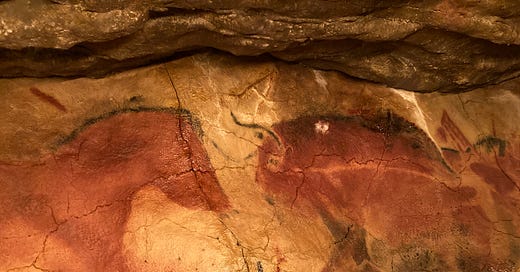When Caves were Temples (Part 1)
I was eight years old the first time I set foot in a prehistoric cave. It was the same cave my father visited as a child, and my grandparents before him.
Magic Words Inuit poem In the very earliest times, when both people and animals lived on earth, a person could become an animal if he wanted to and an animal could become a human being. Sometimes they were people and sometimes animals and there was no difference. All spoke the same language. That was the time when words were like magic. The human mind had mysterious powers. A word spoken by chance might have strange consequences. It would suddenly come alive and what people wanted to happen could happen – all you had to do was say it. Nobody can explain this: That’s the way it was.
Keep reading with a 7-day free trial
Subscribe to Under a Fig Tree to keep reading this post and get 7 days of free access to the full post archives.




